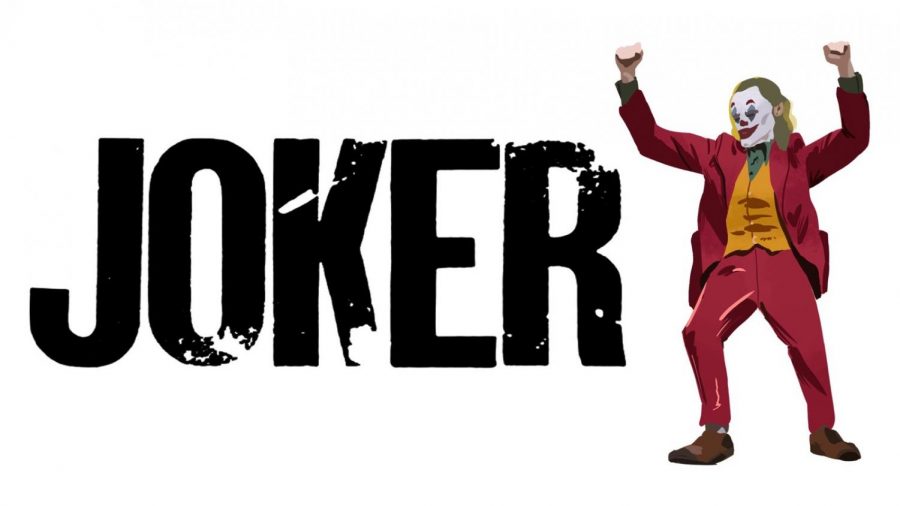Joker: the Latest Controversial Blockbuster
What makes a film provocative? Is it the quality of the actors? Is it the props, the soundtrack, or the special effects? Or, is it the thing that lingers within the viewer when the lights flash back on and the credits roll? There truly is no feeling quite like the one in your stomach after watching Todd Phillips’ Joker. It is a strange and curious sort of controversy within yourself, making one question the very soul of a monster such as the Joker himself.
In today’s ever-changing and evolving society, it seems impossible to produce a highly acclaimed film without the content upsetting nearly as many people as it brings joy to. Joker, which has already grossed over 800 million dollars since its release on Friday, Oct. 4, has been no exception to the rule, creating quite a conversation between viewers and film connoisseurs. It depicts the decline of Arthur Fleck, a mentally ill and extremely troubled party clown, from a human into some completely different sub-human persona known as “Joker.”
While the film has been praised cinematically, many worry about the film’s effect on its viewers due to its association with the 2012 shooting massacre in Aurora, Colorado. At a screening of The Dark Knight Rises, James Holmes stormed the theater, killing 12 and injuring 70. Holmes later told law enforcement officers he “was the Joker,” a frightening and disturbing sentiment.
Some family members and friends of Aurora shooting victims have expressed their dissent of the movie by stating, “…Joker presented the character as a protagonist with a sympathetic origin story…” The film has come under fire for portraying the villain as a twisted sort of vigilante, scapegoating his crimes on mental illness and societal abuse. One of the last scenes shows a mob of supporters cheering on the Joker, clown masks and face paint in all of their glory. If the Gotham City residents are willing to praise a man guilty of serial murder, who is to say that any murderer will not hope to receive the same positive feedback?
According to CNBC (cnbc.com), Warner Bros has responded to the criticism, stating, “Make no mistake: Neither the fictional character Joker, nor the film, is an endorsement of real-world violence of any kind. It is not the intention of the film, the filmmakers, or the studio to hold this character up as a hero.”
This possibly dangerous message has been a point of concern and complaint amongst police departments and viewers, as well. According to Vulture (vulture.com), Los Angeles and New York City movie theater entrances are currently being guarded by police officers “in high visibility” in order to prevent any possible violence similar to the Aurora shooting.
The film also provides an insightful glimpse into the impact of mental health facilities on their patients. When Fleck’s primary social worker and source of medication suddenly becomes unavailable, it triggers his downward spiral from somewhat normal life into mania and his eventual metamorphosis into the ferocious Joker. This represents the consequences of lacking mental health facilities that some believe is the cause of random violence such as mass shootings. In the film, Fleck displays extremely disturbed levels of mental illnesses such as depression and schizophrenia. Many feel that the film has misrepresented the larger population of those suffering from mental illness as violent and murderous people.
Adrian Raine has expressed a completely contrasting reaction to the film’s depiction of mental illness. Raine is a neuroscientist and pioneer in researching the minds of violent criminals, having been the first person to use brain imaging to study murderers. According to Vanity Fair (vanityfair.com), Raine commented, “[The film] was a surprisingly accurate prediction of the kind of background and circumstances which, when combined together, make a murderer… It is a great educational tool about the making of the murderer.”
Another point of criticism that gained mass attention was the film’s use of the song “Rock and Roll Part 2.” The song was sung by convicted pedophile, Gary Glitter, who was guilty of abusing three young girls and sentenced to 16 years in prison. The Joker’s triumphant dance moves, following a gruesome murder, failed to conceal the song’s origin and its profitable earnings for Glitter, thus upsetting many.
Joker was certainly not short of any political parallels when it came to the primary source of anger within the Joker’s following: the gap between the wealthy and lower class. The movie’s strong messages about economic division, while surrounded by fictional characters and events, do shine a light on the gritty truth of today. Mob mentality, group violence, and deep resentment towards the upper class are visible within Gotham’s fight against Thomas Wayne, the city’s new mayor-elect and father of the Joker’s future nemesis, Batman.
All in all, the Joker film has received reviews of appraisal and criticism, record-breaking numbers in the box office, and outrageous reactions from the sprightly fans of the DC comic book characters. Oscar buzz is already becoming sensational as awards season rolls around the corner, and it is only matter of time before the next controversial film comes out and makes everyone stop for a moment to question its morals.

I am the editor-in-chief of the Horizon newspaper and a member of the Class of 2022. I am also the captain of the LHS Speech, Debate, and Model Congress...

I am an illustrator for the LHS Horizon. I am a member of the Class of 2022. I was awarded third place at Adelphi University's Press Day for the individual...
























